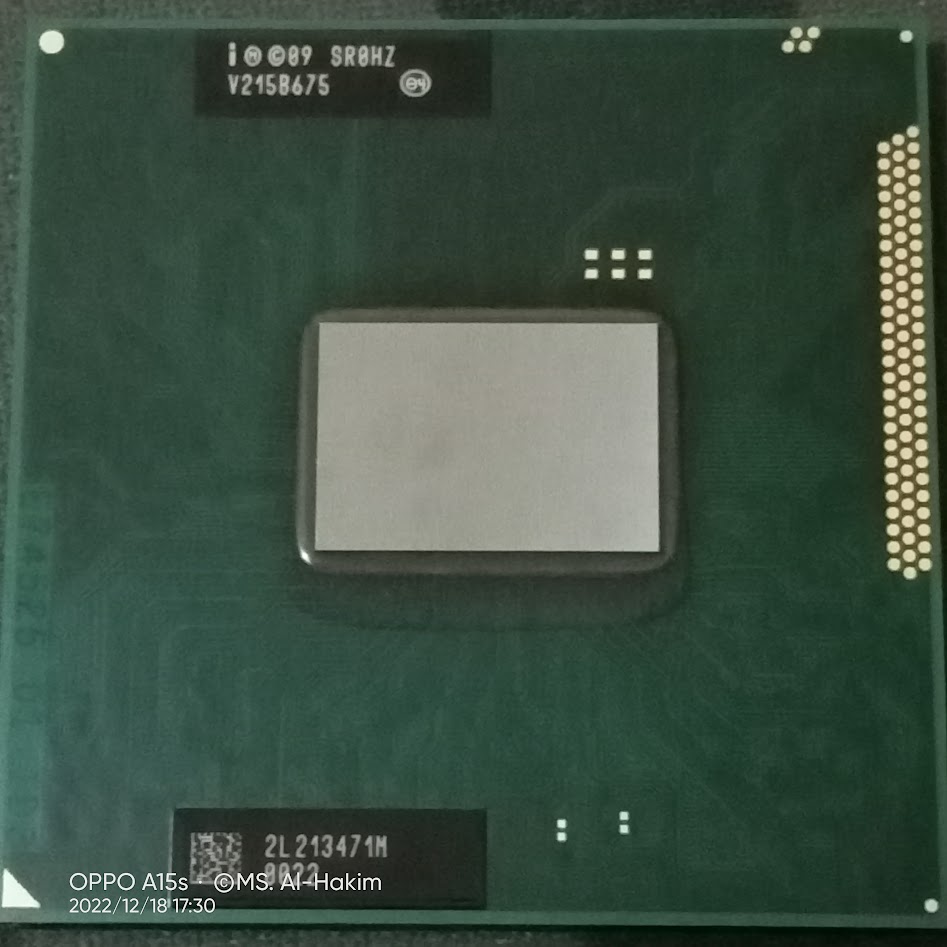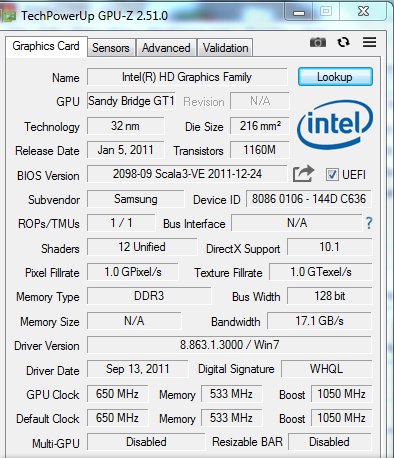Comparing: Intel HD Graphics Mobile (Sandy Bridge) vs NVIDIA Quadro P4000
In this comparison, we analyze two Videocards: Intel HD Graphics Mobile (Sandy Bridge) and NVIDIA Quadro P4000, using synthetic benchmark tests to evaluate their overall performance. This side-by-side comparison helps users understand which hardware delivers better value, speed, and efficiency based on standardized testing. Whether you're building a new system or upgrading an existing one, this benchmark-driven evaluation offers valuable insights to guide your decision.

Intel HD Graphics Mobile (Sandy Bridge)
| Type: | Videocards |
|---|---|
| Brand: | Intel |
| Model: | HD Graphics Mobile (Sandy Bridge) |
Specification Comparison Table
This specification comparison presents technical details of several devices or components to help you understand the key differences between each option. Use this table as a reference to determine which device best suits your needs.
| Specification | Intel HD Graphics Mobile (Sandy Bridge) | NVIDIA Quadro P4000 |
|---|---|---|
| Architecture | Sandy Bridge | Pascal |
| Codename | Sandy Bridge GT1 | GP104 |
| Buswidth | - | 256 bit |
| Clock | 650 MHz - 1050 MHz | 1202 MHz - 1480 MHz |
| Memory Clock | SHARED | 8GB GDDR5 |
| Technology | 32 nm | 16 nm |
| Interface | IGP | PCIe 3.0 x16 |
| Technology | 32 nm | 16 nm |
| Segment | Laptop | Desktop |
Submission Comparison Table
This submission comparison table displays the number and details of benchmark data submissions from various devices or components. This information helps you understand the performance based on the benchmarks that have been tested, as well as providing an overview of the consistency and popularity of the available benchmark results.
Submission Comparison Chart
This chart visualizes the benchmark scores comparison between two hardware devices based on submitted data.
Media Gallery
A collection of photos of tested hardware. These images can help you identify the physical form, model, and variant of the hardware in question. These photos are from our own documentation, and if they are not available we may not be able to document them.
About Hardware Intel HD Graphics Mobile (Sandy Bridge)
Intel HD Graphics (Sandy Bridge) is Intel's second generation integrated GPU, present in processors such as the Intel Celeron B815, released in 2011. This GPU uses the Sandy Bridge architecture and has between 6 and 12 execution units (EUs) depending on the CPU model. On the Celeron B815, this GPU runs at a base frequency of 650 MHz and can go up to 1.05 GHz through the Dynamic Frequency (Turbo) feature.
Although not designed for high performance, Intel HD Graphics Sandy Bridge brings improvements over the previous generation, including support for DirectX 10.1, OpenGL 3.1, and HD video decoding hardware through Intel Quick Sync Video technology. This allows 720p to 1080p video playback to run quite smoothly, and the low power consumption is suitable for energy-efficient laptops.
However, due to the limited number of execution units and the absence of dedicated VRAM, the graphics performance is only suitable for light tasks such as browsing, watching videos, and using office applications. Light or older games such as Plants vs Zombies, Counter-Strike 1.6, and GTA: Vice City can still be played at low resolutions and minimum graphics settings.
Compared to newer generation integrated GPUs such as Intel HD 4000 and above, the performance of Sandy Bridge HD Graphics is already quite behind. But for an entry-level laptop like SAMSUNG 300E4Z with 4GB DDR3 Dual Channel RAM, this GPU is still worth using as a basic graphics solution in operating systems like Windows 7.
Overall, Intel HD Graphics (Sandy Bridge) on Celeron B815 is a simple yet functional graphics solution for light daily use, especially on older generation laptops that can still be utilized for basic productivity tasks and light entertainment.
Hardware Detail:
Device: SAMSUNG 300E4Z
RAM: 4GB DDR3 Dual Channel
OS: Windows 7
Sunday, 27 November 2022 02:25:40 | Update: 1 month ago
About Hardware NVIDIA Quadro P4000
NVIDIA Quadro P4000 is a mid-to-high-end workstation graphics card specifically designed for professional needs such as CAD design, 3D modeling, simulation, and rendering. Based on the Pascal architecture, this GPU is equipped with 1792 CUDA cores and 8GB of high-speed GDDR5 VRAM memory, providing an optimal balance of computational performance, power efficiency, and stability for intensive workflows in the creative and engineering industries.
Quadro P4000 comes with the key advantage of officially certified driver support for professional applications such as Autodesk Maya, SolidWorks, CATIA, PTC Creo, Siemens NX, and Blender, ensuring more stable and accurate performance than gaming-grade graphics cards. The GPU supports NVIDIA Quadro Sync, Mosaic, and DisplayPort 1.4 technologies, enabling multi-monitor configurations up to 8K resolution for complex visualization needs.
In addition, the Quadro P4000 has high-precision computing capabilities (FP64) that are ideal for engineering simulations and numerical analysis. Compared to consumer cards such as the GeForce GTX 1070, the Quadro P4000 offers advantages in color accuracy, rendering precision, and long-term compatibility and stability in professional work environments.
Installed on powerful workstation systems, this GPU is perfect for engineers, architects, animators, and content creators who require high graphics performance without sacrificing reliability and efficiency.
Thursday, 23 June 2022 07:42:37 | Update: 1 month ago



